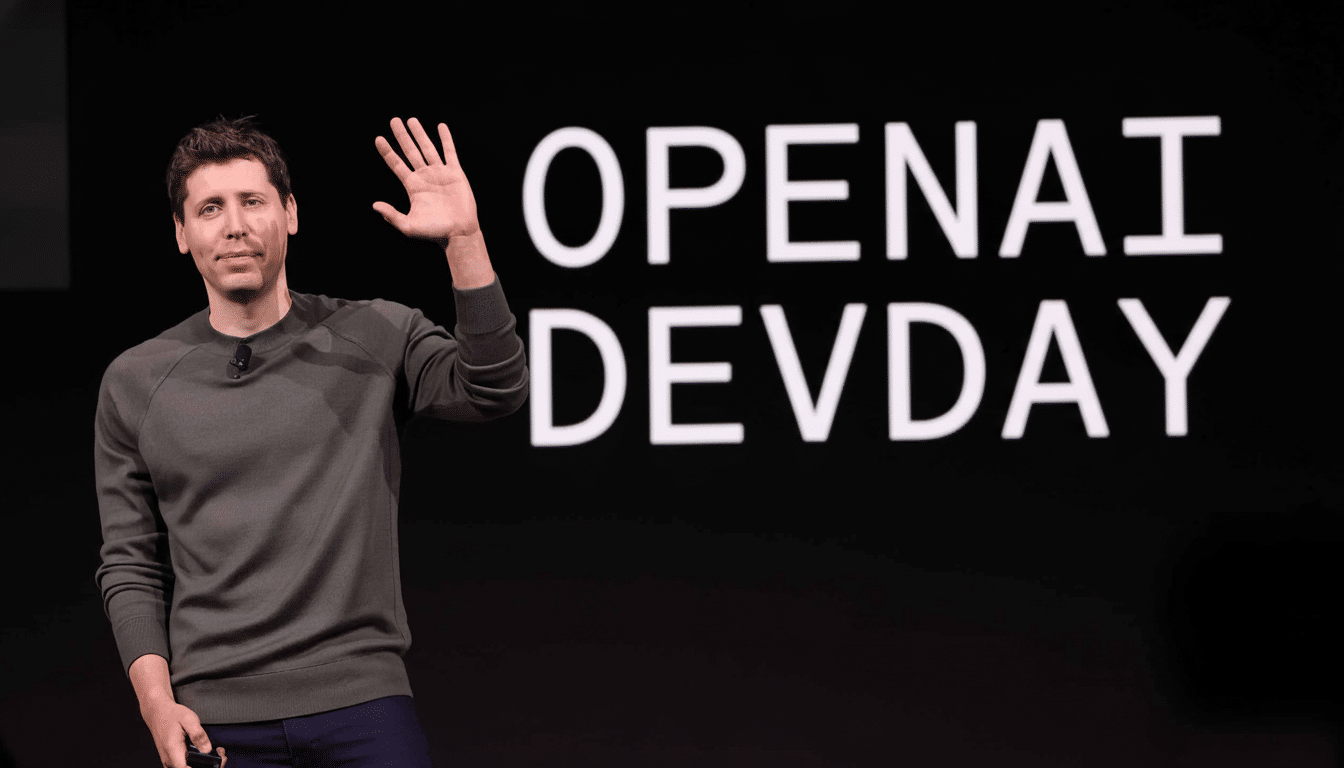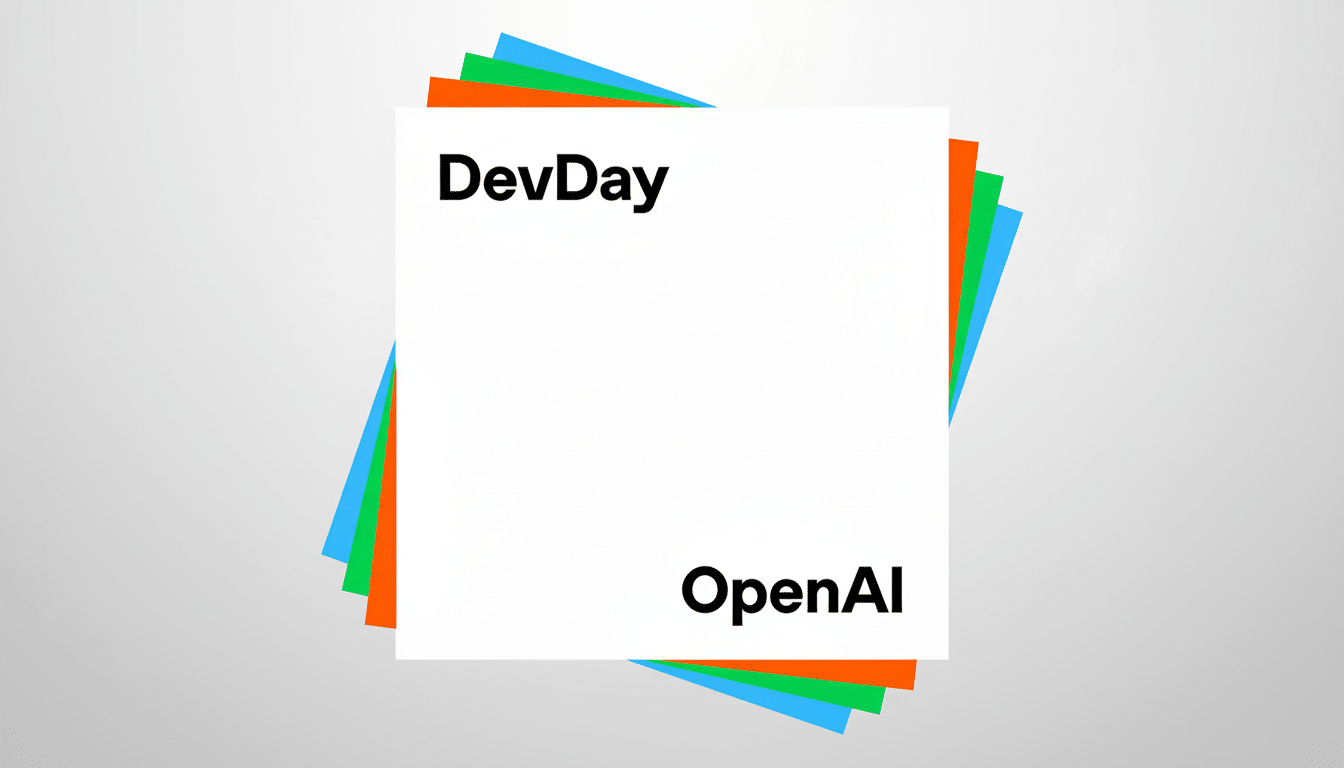OpenAI’s annual developer conference is underway and all signs are pointing to a headline-grabbing hardware moment. With a fireside chat that includes legendary designer Jony Ive on the docket and renewed signaling from OpenAI leadership, the buzz is building for an AI wearables reveal alongside deeper “agentic” tools and consumer-facing ChatGPT upgrades.
What We’re Watching at OpenAI DevDay, From Agents to Wearables
OpenAI has been telegraphing a move beyond software and exploring a hardware partnership with Jony Ive that the Financial Times previously reported attracted interest from SoftBank. That context helps set the stage for today’s buzz: a voice-first wearable that leans heavily on OpenAI’s multimodal models would fit in well with the company’s recent focus on natural, low-latency conversation.
- What We’re Watching at OpenAI DevDay, From Agents to Wearables
- Why an AI Wearable Now, and the Problems It Must Solve
- Developer-Centric Launches to Expect at OpenAI DevDay
- The AI Wearable Playbook: Design, Use Cases and Pricing
- What It Means for Consumers and the Ecosystem
- Bottom Line as News Lands From OpenAI DevDay Announcements

The event is also set to showcase an Agent Builder, offering developers a simpler way to build multi-step AI workflows that can browse, call tools, transact, and tap into private data under safe conditions. Expect more updates that decrease latency, lower hallucination rates with structured outputs, and make retrieval-augmented generation easier – something businesses lean on for accuracy.
Consumer upgrades are also on the docket. ChatGPT has been maturing over gentle transitions from a text box to… a voice layer, vision layer, action layer! Anticipate better real-time voice, smoother on-device capture, and tighter app integrations. OpenAI has said before that ChatGPT now serves more than 100 million weekly active users, so any usability gains could rapidly ripple outward.
Why an AI Wearable Now, and the Problems It Must Solve
Voice-first hardware is in the midst of a second act. Humane’s AI Pin and Rabbit’s R1 demonstrated appetite for assistants that live outside of the phone, despite early reviews noting speed, reliability, and clarity of purpose. Elsewhere, Meta’s Ray-Ban smart glasses showed that always-on cameras and microphones can be compelling when used wisely and designed artfully.
An OpenAI wearable would need to solve three difficult challenges.
- Conversational latency has to be as close to zero as possible — within about 300 milliseconds end-to-end — to mimic human conversation.
- The device must have efficient handoff between on-device processing and the cloud in order to save battery life while maintaining smartness.
- Transparency and granularity of trust and privacy controls are essential, especially for capturing ambient audio and video.
Market dynamics may help explain the timing. Generative AI startups raised about $30 billion last year, according to CB Insights, and enterprises are piloting agent-driven workflows at scale. Something wearable that turns OpenAI’s models into a daily habit would be a growth lever — and a way to get real-world feedback for multimodal systems.
Developer-Centric Launches to Expect at OpenAI DevDay
The Agent Builder is widely suspected to offer more advanced features in an easier-to-use shell: policy telling which tools may be used safely, auditable memory, and safe retrieval from personal knowledge bases. Anticipate presets for typical tasks — such as customer support, e-commerce checkout, and sales operations — and pipeline paths to deploy in production with observability and cost controls.
Under the hood, look for improved function calling reliability, more predictable JSON mode, and streaming responses that make it easy to have your apps start rendering output as soon as they’ve generated some of it. Developers have expressed frustration at cost and token limits; meaningful improvement in this area would be rapidly adopted across all SaaS and internal workflows.

OpenAI has been pursuing real-time multimodal models as well. That means stronger speech synthesis, more refined Whisper-style transcription on-device, or crisper image understanding will resonate through contact centers, field service, and accessibility apps — places where every second, even every word, counts.
The AI Wearable Playbook: Design, Use Cases and Pricing
Do not expect a general-purpose gadget to win through breadth. The winning formula will focus on a handful of hero workflows:
- Capturing and recalling moments quickly
- Hands-free messaging
- Real-time language translation
- Smart suggestions that are contextually sensitive and respectful of boundaries
Pricing and subscriptions will certainly be equally essential — see how Humane combines hardware with a monthly plan; and how smart glasses rely on opt-in bundle services to keep initial costs palatable.
Design will be scrutinized. Ive’s loves are simplicity, tactility, and discretion. Whether that’s a clip, a pendant, or eyewear, it has to be socially acceptable and functionally obvious — no learning curve, no fiddly gestures, and it mustn’t get drowned out by background noise. If OpenAI gets wake-word performance, barge-in handling, and mic arrays tuned for real life right, it will separate itself from early wave entrants.
What It Means for Consumers and the Ecosystem
What’s promised to consumers is ambient intelligence that gets out of their way — faster answers, fewer taps, and help that feels personal without creeping them out. To developers, a legit agent platform combined with new monetization paths could transform GPT-fueled automations from fun hacks to sticky products.
Regulators and standards bodies are going to be watching this closely, obviously. Always-on devices pose challenges around consent, data minimization, and geographic restrictions. Look for mentions of “privacy-focused defaults, on-device redaction, enterprise-grade audit logs, and safety testing frameworks” similar to those already promoted by NIST and related industry groups here.
Bottom Line as News Lands From OpenAI DevDay Announcements
It will change the competitive landscape for both developers and users if OpenAI delivers a sleek AI wearable to market alongside credible agent tooling and cheaper, faster multimodal models. We’re following the keynote and breakout sessions for specific specs, pricing, and availability, as well as parsing what’s real, what’s roadmap fantasy, and what it all means for your apps — and your wallet.

